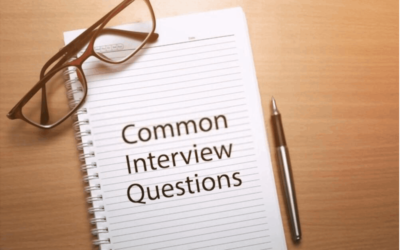Sometimes, the right template is all you need to land that perfect CV. If you’ve read our premium article on how to create the perfect CV then this article would shed further light in the area of selecting the right template for yourself. For those in the job-seeking arena or those embarking on a career change, you can build a CV that catches the attention of recruiters. Are you ready to explore the right CV template for your job application? Let’s do it!
Types of Curriculum Vitae
There are four types of CVs, namely:
- The chronological CV (also, the reverse-chronological CV).
- The functional CV.
- The combination CV.
- The Targeted CV.
These four CV types hold similar information but have a different arrangement and use. Let us look through and decide which type would be the best for you.
- The Reverse Chronological CV
This is the traditional CV type where you list your job history based on the most recent job you held down to the oldest position held. The experience length should be no longer than 10 to 15 years old from the present job or the last 5 to 6 jobs you held. This experience length makes for the relevance and brevity of your CV.
The reverse chronological CV is the standard CV in use and is easy to scan at a glance. In this CV type, you highlight your duties, work history, key achievements, and job experiences. If the job you are applying for is in the same field as your most recent job held, the reverse chronological CV is best suited for you. Stay with me to get the reverse chronological CV template.
- The Functional CV
Also known as a skill-based CV, the functional CV can be used if you are going for a career change or when you’ve been on a career break. A functional CV is a document that features your training or the skills gained from previous job positions held or from an institution of learning.
Why is a functional CV the best CV type for a career change? It’s because a functional CV focuses on your skills, work experience, expertise, and knowledge. You develop and organize this kind of CV based on your skills and not on your previous job titles or chronology. Coming up shortly is a format on how to write your functional CV.
- The Combination CV
This type of CV is also called a hybrid CV. Here, you combine the best aspects of the chronological CV and the functional CV to give a unique whole. A combination CV incorporates your skills, accomplishments, work history, and experiences. The combination CV helps your potential employer understand the relationship between your professional experience and your skills. It is similar to a chronological CV, but the difference is that it has the core competencies or key skills at the top. You can also use this CV type if you’re undergoing a career change.
- The Target CV
The target CV is a CV written for the express purpose of applying for a particular job for which the CV is written. You use this when you have a particular position and company in mind. Here, you must tailor all the information, experiences, skills, and content in your CV for the sole purpose of applying for that job.
A targeted CV cannot be used for more than one job application. If you want to seek another job, you have to rewrite the CV to suit the next job search, effectively changing the overall outlook and purpose of the CV. This type of CV can be used by newly graduated job seekers and people who want a career change after a long time working at another job.
CV Templates
- Reverse Chronological CV template.
This CV template is a guide on how to write your chronological CV without hassle. So how do you go about this? Let’s explore the template below.
- Name and Contact information: Your address may or may not be necessary, depending on the job you’re applying for.
- Summary of qualifications: Here, you highlight your qualifications as related to the job. Ensure that it is interesting enough to capture the eye of the recruiter. It can also include a job title.
- Educational background: Your academic background is given in reverse chronological order on your CV. You start from your most recent educational certification or qualification, stating the year and duration.
- Professional experience: If you are still working at a job at the moment of writing your CV, ensure that you start by presenting your current position first in the list. So, the list goes, starting from the most recently held job to an older one and in that order. Do not state work experiences greater than 15 years.
- Skills: Write down relevant skills that pertain to the job. Anything you know how to do that will aid your getting an interview must not be overlooked!
- Other relevant information: You can include what you feel is necessary to get the interview. For example, you can include your interests and hobbies, especially if they aid your cause.
- References: Available on request
- Functional CV Template
Here’s the template for a functional CV.
- Name and contact information
- Summary: Here, you provide an abridged version of your CV. Write something short and captivating at a glance. You can also include the job title.
- Skills or core competencies: They include hard skills and soft skills. You must graciously highlight your skills in a functional CV because they are your selling points. Use bullet points to list them out and let them be clear and concise.
- Work experiences: Here, you add your work experiences and dates. The duration of the job is added to the experiences and a summary of the job description
- Qualifications: Write your certificate courses, training, and other achievements here. Use bullet points to present them.
- Interests and hobbies
- References
- Combination CV Template
Here’s a template for a Combination CV.
- Name, contact address
- Skills: Relevant skills and information. Present them in bullet points for ease in reading.
- Education: State your educational background and qualifications, including institutions attended, and the date/duration. This should be in reverse chronological order.
- Accomplishments: Here, you list your achievements and accomplishments with the dates. Accomplishments include degrees, certificates, diplomas, and so on.
- Experiences: Your experiences gathered over the years should be included in reverse chronological order. The job titles you held at previous workplaces, duration of employment, and the company of employment are all relevant information.
- References
- Targeted CV format
Here’s the template for a targeted CV.
- Name, contact information
- Summary of qualification: Your summary should be streamlined to the vacancy advert you are applying for. You should mention the name of the company and use the job title from the job description. Include about 2 to 3 related skills, achievements, years of experience, etc. Let them know you have what they want at a glance.
- Experiences: Identify the skills and job duties from the posting. Write out how proficient you are at those duties and add the results of your fulfilling said duties. Remember, your job title should be the same as in the job posting.
- Education: Write it out as with the tailored accomplishments. Strive to make it comply with the job advert as best as you can.
- Other relevant information
Conclusion
In conclusion, you must select the right CV template suited for you and effectively optimize it. Endeavor not to leave out any relevant information that may dwindle your chances of getting shortlisted for an interview! While you may have these templates, you may still have some difficulties in writing a CV without missing keywords, etc. The first time is always the hardest, but it gets easier with time. We could also be of help. Your dream job is just a CV away!




